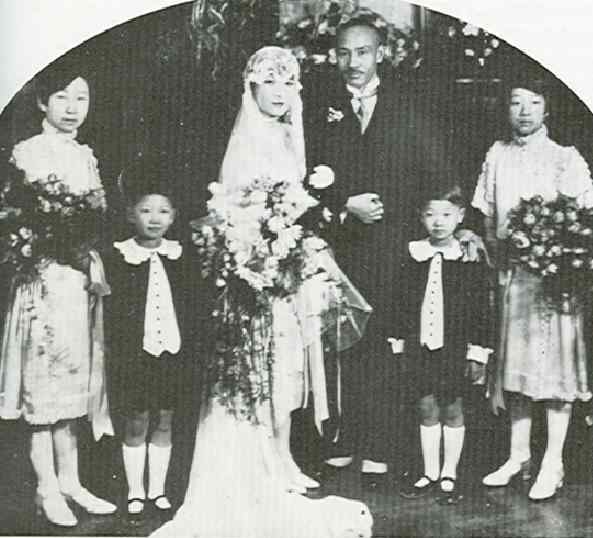
Biographies: Chiang Kai-shek (China, 1887-1975)

Figure 1.--Here Chiang is at his very Western looking wedding at Shanghai's Majectic Hotel and flamked by page boys and flowe girls in 1927. His wife Mei-Ling Soong was a graduate of Wellesley and sister-in-law of Sun Yat-Sen. Shev became an effective spokeswoman for her husband in the United States.
|
|
Chiang was born into a middle-class family (1887). He attended a Chinese Imperial military accademy and continued his military education in Japan. While in Japan he became disafected with the Imperial regime and came to support republican ideals. He served for a time in the Japanese Army. He returned to China when the Wuchan Uprising occurred (1911). He was general who became prominent in the Kuomintang (KMT) (1923) and came to lead the movement (1925). . He led the Northern Expedition to unite China (1926-28). He was intent on modernizing China. He promoted traditional Confuscan ideals. His efforts to modernize China and build the economy were diverted by war, first with the Communists and then with the Japanese. He first cooperated with the Communists who were a part of the KMT coalition, but broke with them and launched a bloody campaign to exterminate them (1927). He married Mei-Ling Soong. She was a graduate of Wellesley and sister-in-law of Sun Yat-Sen. She became an effective spokeswoman for her husband in the United States. Chiang dominated the Chinese Government (1928-48). His campaign against the Communists was interupted by the Japanrse invasion (1937). He led Chinese resistance to the Japanese. President Roosevelt thought he would be an important ally in the war against Japan. While China occupied the bulk of the Japanese Army, Chiang and the KMT was largely incapable of offensive operations against the Japanese. His Government was accused of corruption which was a major reason KMT units were ineffective. After World War II, the Civil War intensified. The United States attempted to mediate, but that was unrealistic. The Soviets helped arm the Communists, in part with captured Japanese arms. The Communists defeated KMT forces in pitched northern battles. Chiang and his followers fled to Formosa (Taiwan) (1949). The Communists did not have the naval capability to
cross the Straits of Formosa in force. And unlike Hainan Island, there were not substantial Communist forces on Formosa.
HBC

Navigate the Boys' Historical Clothing Web Site:
[Return to the Main World War II biography page]
[Return to the Main biography C page]
[Introduction]
[Activities]
[Biographies]
[Chronology]
[Clothing styles]
[Countries]
[Theatricals]
[Bibliographies]
[Contributions]
[Essays]
[FAQs]
[Glossaries]
[Images]
[Links]
[Registration]
[Tools]
[Boys' Clothing Home]
Created: 5:57 AM 8/30/2004
Last updated: 3:28 AM 7/11/2011



